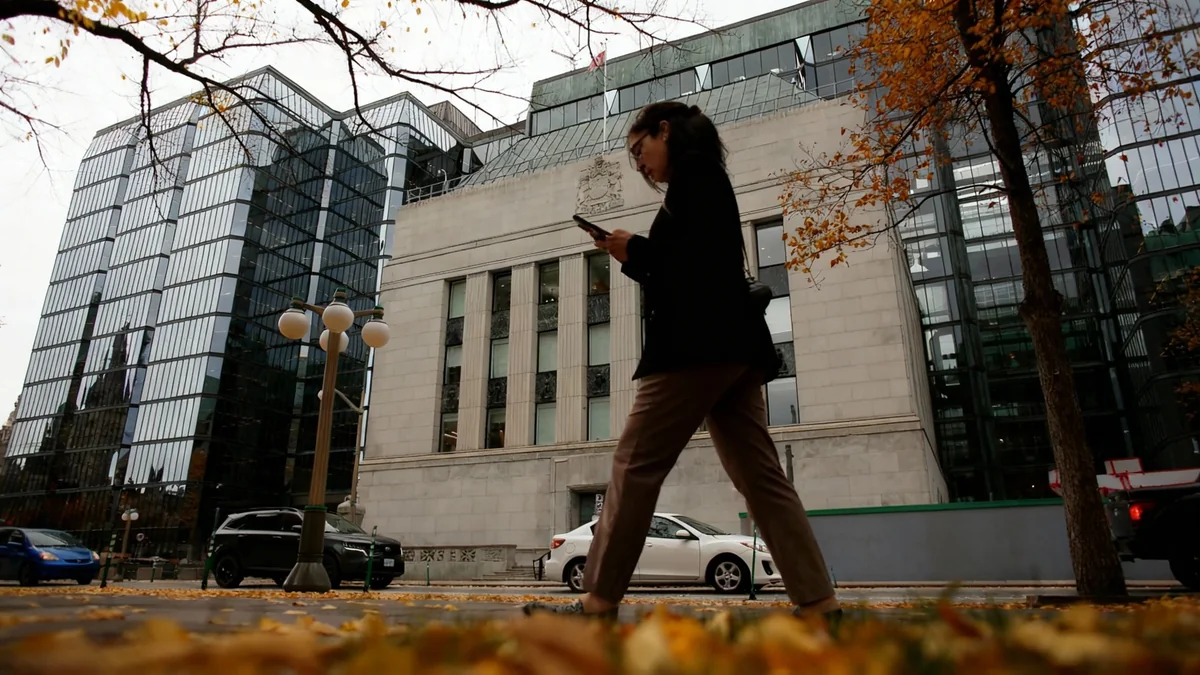The U.S. Federal Reserve reduced its key interest rate by a quarter-percentage point on Wednesday, a move that was widely anticipated by markets. The decision, which places the new federal funds rate in a range of 4.00% to 4.25%, was made in response to growing concerns about downside risks to the labor market. The announcement led to a volatile trading session, with major U.S. stock indices closing with mixed results.
Key Takeaways
- The Federal Reserve implemented a 25-basis-point interest rate cut, bringing the target range to 4.00%-4.25%.
- Fed Chair Jerome Powell described the current economic environment as a "difficult situation for policymakers," highlighting the challenge of balancing employment goals with inflation targets.
- U.S. stock markets showed a mixed reaction, with the Dow Jones closing higher while the S&P 500 and Nasdaq ended the day with slight losses.
- The Fed's economic projections, or "dot plot," revealed a wide range of opinions among officials regarding the future path of interest rates, particularly for 2026.
Federal Reserve Implements First Rate Cut Since 2024
The Federal Open Market Committee (FOMC) concluded its two-day meeting on September 17 by announcing a 0.25% reduction in the federal funds rate. This marks the first rate cut since December 2024 and comes 364 days after the central bank initiated its current easing cycle.
In its official statement, the committee cited "downside risks" to the labor market as a primary factor in its decision. Despite the cut, the Fed's economic outlook included some positive adjustments. The forecast for annual GDP growth was upgraded, while projections for unemployment remained largely unchanged. Inflation, as measured by the Consumer Price Index (CPI), is expected to stay near 3%.
Understanding the Fed's Dual Mandate
The Federal Reserve operates under a dual mandate from Congress: to promote maximum employment and stable prices. The current challenge lies in navigating an environment where risks to the job market are increasing while inflation remains above the Fed's long-term 2% target. Rate cuts are intended to stimulate economic activity and support employment but can also risk fueling inflation.
Powell Addresses Economic Challenges
During a press conference following the announcement, Federal Reserve Chair Jerome Powell provided context for the committee's decision. He emphasized the complexity of the current economic landscape, stating, "There is no risk-free path now."
Powell described the situation as difficult for policymakers due to the inherent "tension between the two goals" of achieving full employment and bringing inflation back down to the 2% target. He noted that while tariffs have contributed to price increases, it remains unclear if this is a "one-time shift in the price level" or a more persistent issue.
"Downside risks to employment have risen," Powell stated, signaling a key concern for the central bank. He also confirmed that the Fed's policy is "not on a pre-set course" and will adapt to incoming economic data.
Powell also revealed there was "little support" among committee members for a more aggressive 50-basis-point cut at this meeting.
Mixed Reactions Across Financial Markets
The Fed's announcement and Powell's subsequent comments triggered significant volatility in U.S. financial markets. Equities initially rose on the news of the rate cut before fluctuating throughout the press conference as investors processed the uncertain outlook.
Stock Market Performance
The major indices finished the day with divergent results, reflecting investor indecision:
- The Dow Jones Industrial Average gained 0.57%.
- The Russell 2000, an index of small-cap stocks, rose by 0.44%.
- The S&P 500 slipped by a narrow 0.10%.
- The Nasdaq Composite declined by 0.33%.
The initial market response saw the S&P 500 briefly turn positive before retreating, while the Nasdaq experienced a steeper decline before recovering some of its losses.
Treasury Yields and the Dollar
The bond market also reacted to the news. Yields on shorter-term Treasury securities declined following the announcement. However, yields on bonds with maturities beyond one year finished the day higher. The U.S. Dollar Index, which had been up earlier in the day, reversed its gains and closed down 0.22%.
Pre-Meeting Data Shows Housing Slowdown
Earlier in the day, economic data revealed a continued slowdown in the U.S. housing market. August figures for both Housing Starts and Building Permits came in below expectations. Housing Starts were reported at 1.307 million units, an 8.5% year-over-year decline, while Building Permits were 1.312 million, down 3.7% from the previous year.
Divergent Views on Future Rate Path
The updated Summary of Economic Projections, including the closely watched "dot plot," highlighted a significant divergence of opinion among Fed officials about the future trajectory of interest rates. While the median forecast suggests another half a percentage point in cuts over the two remaining meetings in 2025, the outlook for 2026 and beyond is much less clear.
The dot plot revealed a wide array of forecasts for where rates will be in 2026. One notable outlier was a single projection for a rate of 2.75% in 2025, significantly lower than the consensus. This forecast is widely believed to belong to Stephen Miran, a new Fed governor who also serves on the President's Council of Economic Advisers, raising questions for some about the central bank's independence.
According to the median projection, nine of the 19 FOMC participants anticipate two more rate cuts before the end of the year.
Key Corporate Movers on a Volatile Day
Individual stocks also saw significant movement based on company-specific news. Software company Workday (WDAY) surged 7.2% following reports that activist investor Elliott Management had taken a $2 billion stake in the firm. Medical technology company Hologic (HOLX) was another top performer in the S&P 500, closing up over 7%.
On the other hand, homebuilder Builders Firstsource (BLDR) was among the biggest decliners, falling 5.6%. Ride-sharing company Uber (UBER) also saw its shares drop by 5%.
In other news, the ticketing platform StubHub (STUB) made its public debut. After an initial pop, the stock stumbled, closing the day 6% below its offering price. Chinese tech giant Baidu reached a two-year high after announcing plans for its AI division to develop its own training chips.





